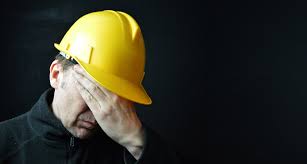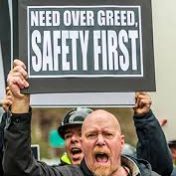
Construction worker suicide is a scary subject, and we need to do a better job of understanding what’s going on because, there’s a huge portion of the construction industry business owners and leaders that are simply unaware of the fact that this is an issue.
Steve Mongeau, the executive director of Samaritans, a suicide prevention center in Boston names several factors. They include a competitive, high-pressure environment, a higher prevalence of alcohol and substance abuse, separation from families and long stretches without work.
These inconsistency can lend to some real financial concerns, self-doubts, possible divorce, and health issues in other areas causing construction workers to become somewhat despondent and consider suicide as an option,” Mongeau said”.
The construction and extraction industries have the second-highest rate of suicide – 53.3 per 100,000 workers, according to the U.S. Centers for Disease Control and Prevention (CDC).
Factors that have led to such a high rate of suicide in construction may include:
- A role that often is isolating
- Periods of unsteady employment depending on seasons
- Mental health stigma
- Sleep disruption
- Chronic pain caused by manual labor
- Travel which may separate workers from families and friends
- Physical strain
- Access to means of committing suicide like high places
- Pressure to finish projects
- Low or inconsistent pay
- Poor working conditions
As a safety manager, supervisor or competent person understanding what triggers stress that can lead to depression and suicidal thoughts and feelings puts you in a position to help others.
Initiating mental health campaigns and providing training could assist workers with identifying the signs of stress preventing suicidal thoughts. The CDC stresses that suicide prevention on the construction site is critical because it’s where many workers spend most of their time.
In addition, substance abuse there’s stress and anxiety or physical pain caused by compound injuries. More than 15 percent of construction workers have abused drugs or alcohol or prescription medications. Some of the most abused prescription drugs include OxyContin, Percocet, and Vicodin.
A mental health campaign will educate workers to recognize the signs and causes of stress and can help to legitimize feelings of stress and anxiety early on before they turn into depressive and suicidal thoughts.
Likewise, training on substance misuse should include its effects, and spotting employees with a problem and giving them the support required.
The key is to create a supportive environment where people aren’t afraid of being reprimanded.
So if you or someone you know has suicidal thoughts, the National Suicide Prevention Lifeline can be reached at
1-800-273-TALK, or 1-800-273-8255
It is staffed 24 hours per day.
Now over to you!!!
How do you create a supportive work environment?
Are workers afraid of being reprimanded?
When is mental health an issue?
When is pain an issue?
If you have any concerns or questions please feel free to drop by the comments box, we look forward to hearing your feedback.
Resources:
